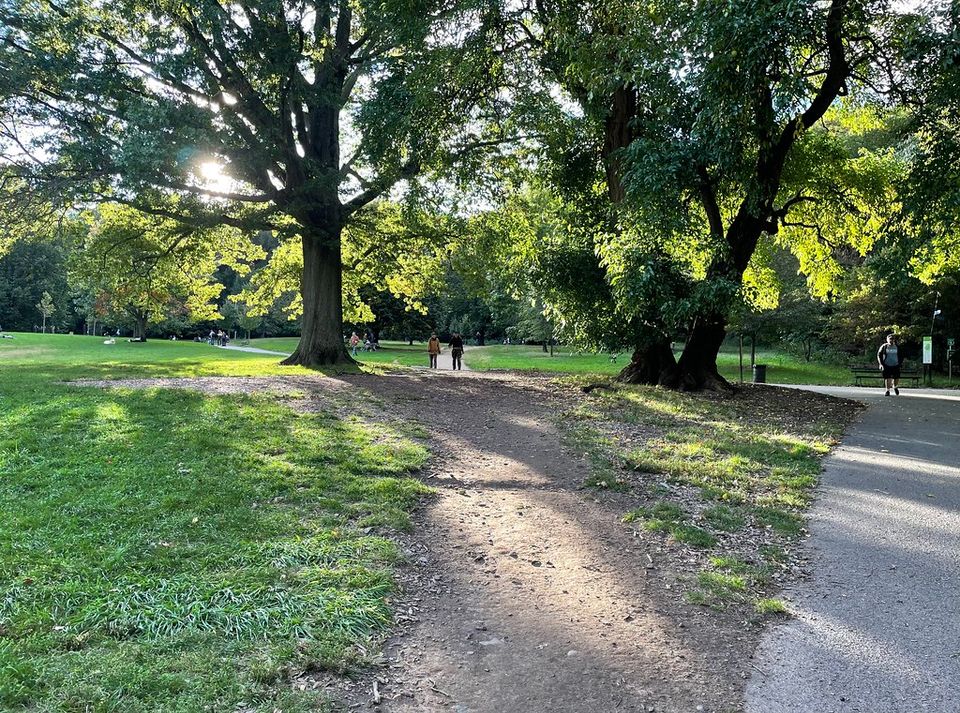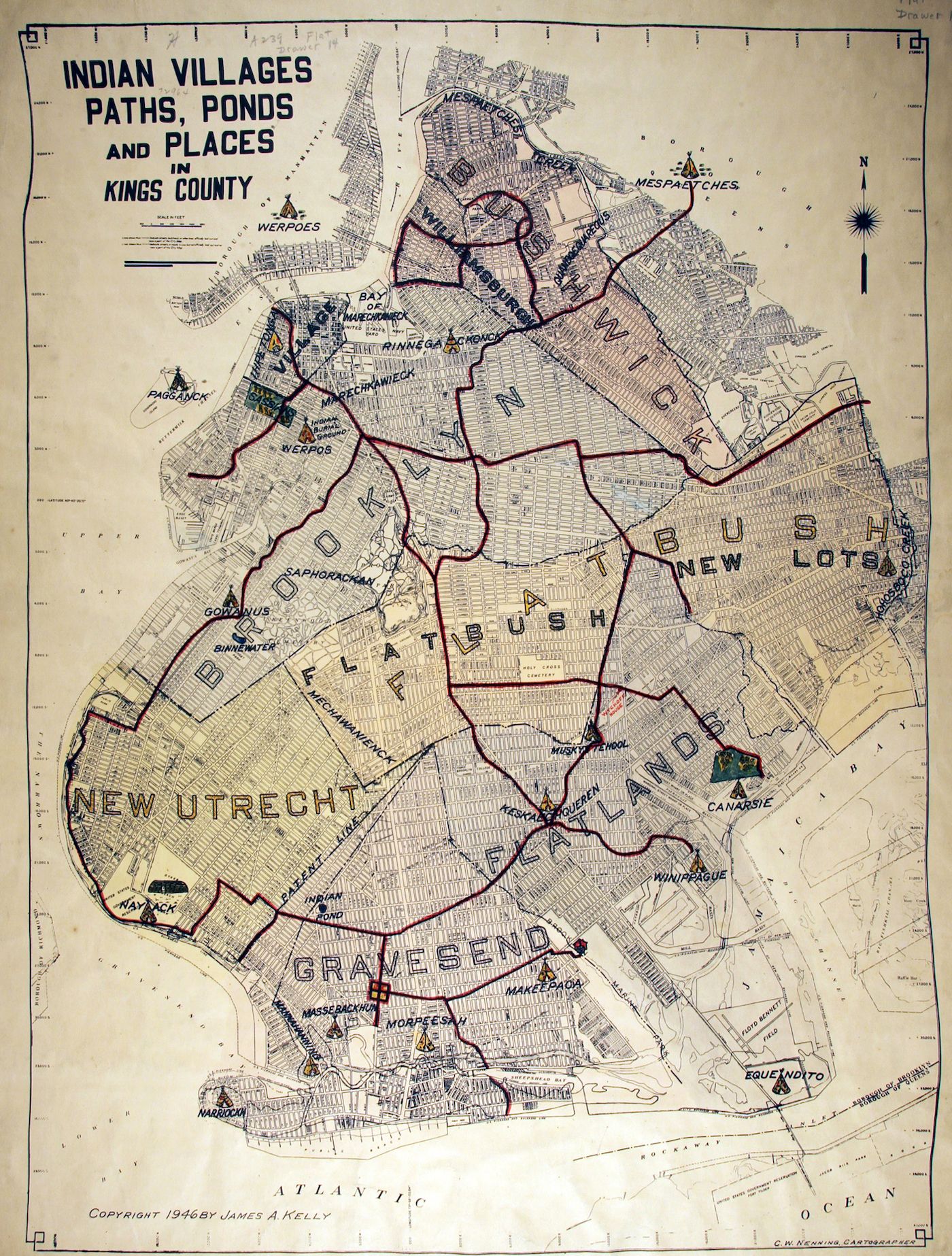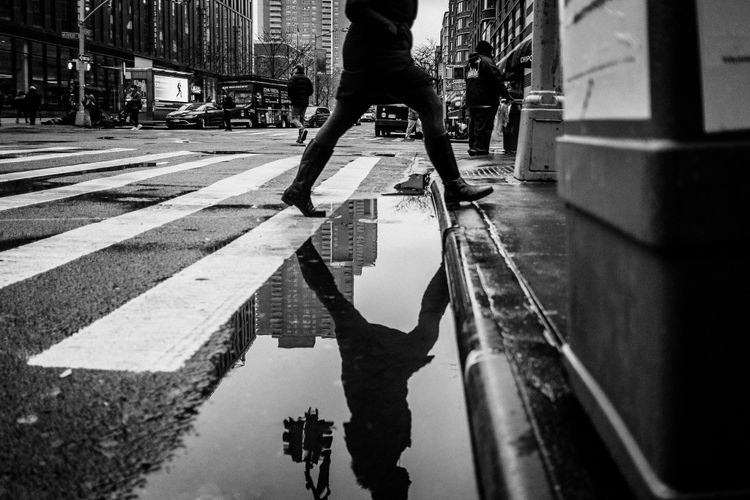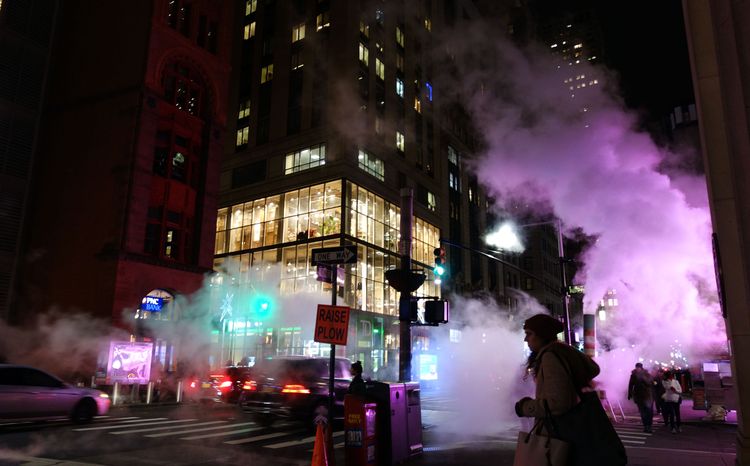Fall Parks Are Etched with Summer’s Desires

The busiest time in the city parks is waning as autumnal colors are just touching the trees. The picnics are scarce, and the concerts, film screenings, sports meetups, and other gatherings on the lawns have largely disbanded for the season. With the sun setting sooner, fewer are lingering in the evening hours, and the early cold fronts are thinning the number of walkers and runners in the brisk morning air. But traces of the warm weather multitudes and the paths they took are everywhere.
Desire lines trodden by hundreds of feet, flattening the grass into dirt, are cut deeply into the earth. They connect roads and sidewalks or forge straight lines in places where the official infrastructure does not offer the most efficient and easy route. Or they angle towards waterways and through woods where people are discouraged from going, but go anyway.
The NYC Parks staff regularly closes these desire lines, often to protect the ecology; they still return. (Although desire lines in Central Park were once paved, the practice ended in the 1980s to keep the greenspace from becoming latticed with concrete.) In 2013, the Parks Department with the Natural Areas Conservancy created a digital map of all the city’s trails, including these lines, to better understand what was drawing people off the formal paths, whether a waterfall, ATV racing area, or cruising spot.
By October, these desire lines are gouged into the land, eroded by months of collective resistance to the designated thoroughfares, so deep they may last until next summer. Observe the desire lines on your own urban trails. What paths do you follow as they were designed, keeping your shoes on the pavement? What trails do you use as shortcuts, following the routes forged by those before you? What lines do you follow to your own desires, cutting through long grass, pushing away heaps of fallen leaves, and maybe soon making the first marks on freshly fallen snow? Who will follow the path you’ve made, and what do you want to share about how you see the world?

- Manhattan is home to what may be the world’s most successful desire line. Broadway began as the Weckquaesgeek trail, used by Indigenous people to navigate to different settlements on the island before colonization. It once went all the way from the bottom of Manhattan to Mohican territory in Montreal. It still resists the grid system implemented in Manhattan, despite the desires of the 1811 planners to straighten it out. Instead, its persistent angle led to the city squares—Times, Herald, Union, and Madison—that adapted the new roads to the old path.
- Another area of Manhattan that resisted the progression northward of the grid system was Central Park. An 1807 commissioner’s plan allowed for sporadic rectangles of green but mostly filled up the island with neat lines of streets. A remnant of these thwarted planning desires is at what would have been Sixth Avenue and West 65th Street, where a survey bolt remains lodged in the exposed bedrock.
- The r/DesirePath subreddit has some 319,000 members that share and celebrate these acts of city planning defiance from across the globe, demonstrating how they also highlight urban design problems, including a path along a Staten Island road that lacks a sidewalk, a path to stay dry on a sidewalk that regularly floods in Brooklyn, and a commuter path through the overgrowth under the 7 train tracks in Queens.




